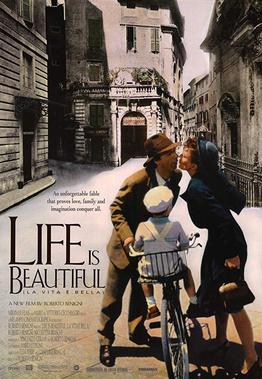The movie Life Is Beautiful has a good plot to it. It's about a man and woman (Guido and Dora) who live totally different lives during World War II and eventually fall in love and have a son (Giosuè) together. They get separated into two different camps and have to live without each other. Guido is forced to endure labor while Giosuè stays with the other children and awaits his future. To make things better for his son, Guido pretends that they are playing a game and explains that if he follows them, he will win a prize at the end. These rules help Giosuè stay out of trouble and sometimes make him unnoticeable. Life Is Beautiful and the Holocaust museum both relate to each other because their tone was solemn and serious. In the Holocaust museum, we learned about how life was for people living during that time. We were shown different artificers, pictures, and had a guest speaker. The guest speaker and the movie were similar because it was in a person's point of view in their life.
The tone of the movie was heartfelt and humorous because whenever Guido wanted to reassure his son that everything was fine, he would walk in a funny way. This is shown throughout the movie whenever Giosué almost gets in trouble. The humor is brought out when the game is mentioned. This game keeps Giosué interested and distracted from what is actually happening.
Life is shown as beautiful not only from the title, but from the hidden messages that are expressed in the movie. Always staying positive is a big part of this film. An example of how Guido stays positive is that he never loses hope of getting his family back together again. This hope pushes him to get through the work he is forced to do. Another way life is beautiful is shown is by making the days count. Guido managed to put a smile on his sons face by making a fool of himself or just reminding him that they will get out soon.

No comments:
Post a Comment